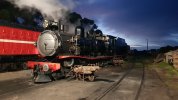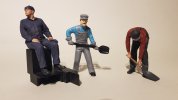curtis
Registered
I'm in the process of upgrading my LGB 20272 (Heidi) - part of this involves adding an axel-based clock to correctly time the sound effects. I'm doing this using the Mxion clock sensor. I have it working but I'm trying to understand a couple of things to get the right cadence of the 'chuff'. Unfortunately, I don't have the technical understanding of the real prototypes to know the right configuration and my searching didn't turn up an answer.
My questions:
Curtis
My questions:
- Is the G 3/4 a 2 stroke or 4 stroke? (and for future reference, how can I understand this about a locomotive?)
- For a 2 stroke locomotive, I understand the opposite wheels are 1/4 turn out of alignment to stop a situation where they would lock perfectly in 180 and stop the cylinders on the push/pull), if so, does this mean my magnets should also be placed 1/4 turn from each other to simulate the chuff correctly?
Curtis

![20240628_122643[1].jpg 20240628_122643[1].jpg](https://cdn.gscalecentral.net/2024/09/thumb/521511_20240628_1226431.jpg)
![20240922_140713[1].jpg 20240922_140713[1].jpg](https://cdn.gscalecentral.net/2024/09/thumb/521513_20240922_1407131.jpg)


